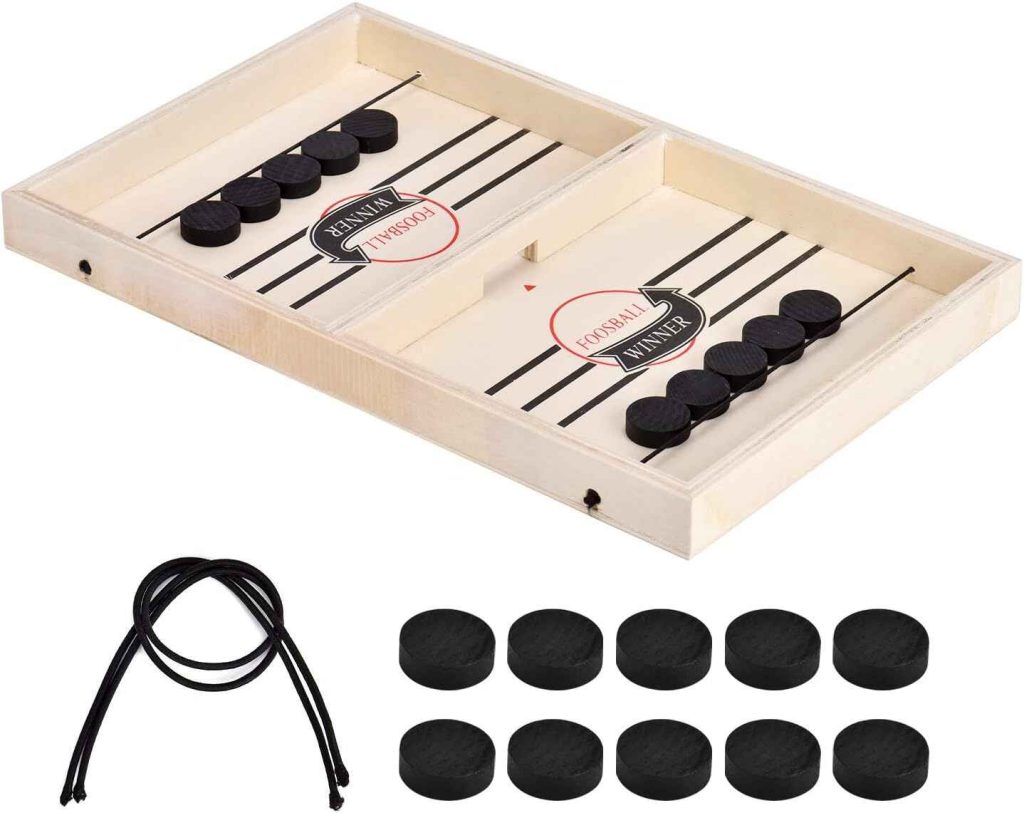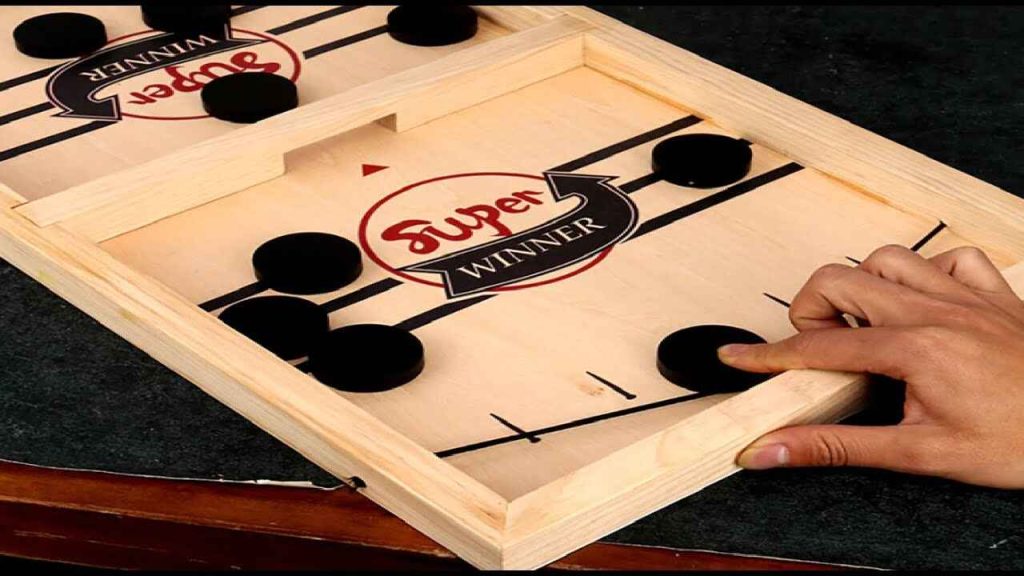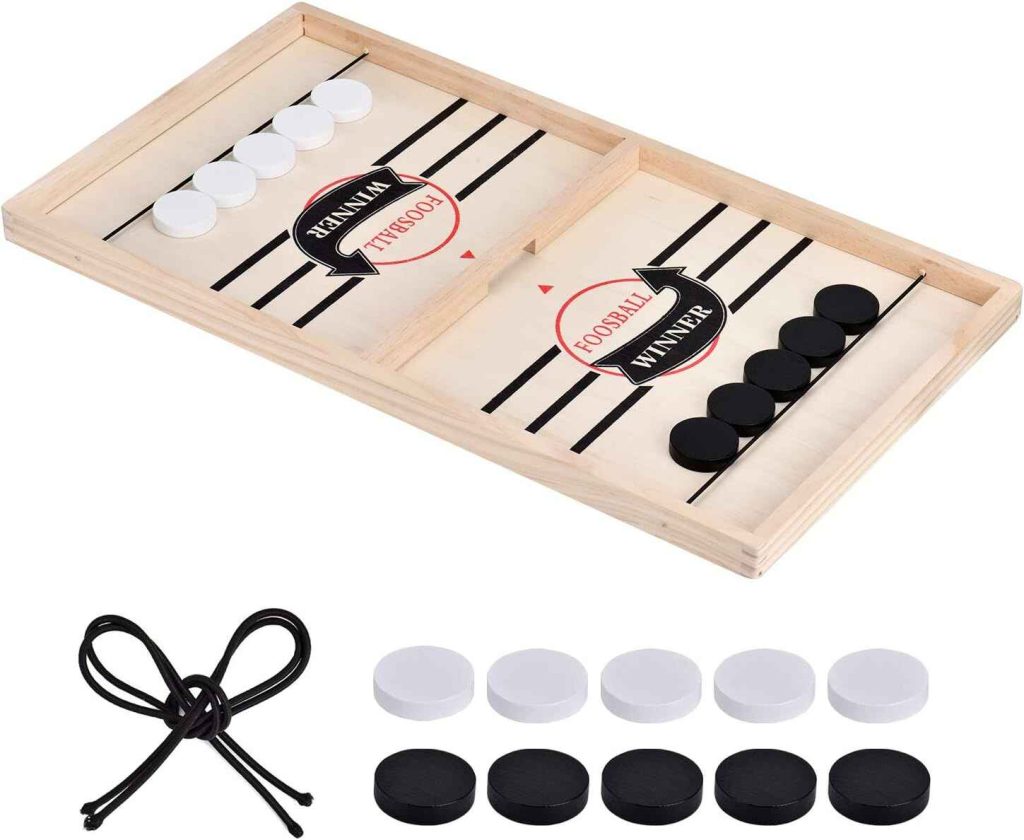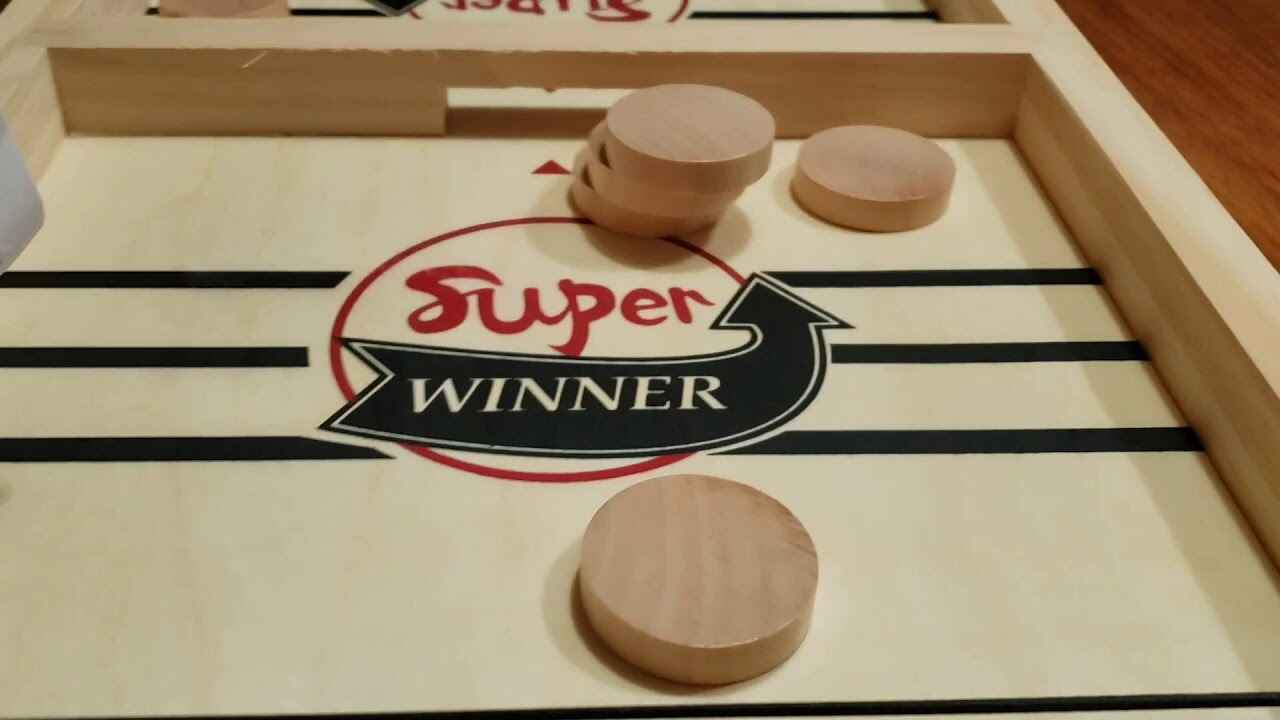Introduction
Sling hockey, also known as tabletop hockey, is a fun and engaging game that can be enjoyed by players of all ages. Unlike traditional ice hockey, sling hockey is played on a flat surface with small pucks and sticks, making it an ideal indoor activity. This blog will guide you through the basics of sling hockey, including the rules, techniques, and strategies to help you become a skilled player. Sling hockey is a fast-paced tabletop game that simulates the action of ice hockey. It typically involves two players who use small paddles or sticks to hit a puck across a board into the opponent’s goal.
Equipment Needed

To play sling hockey, you will need the following equipment:
Sling Hockey Table: The playing surface, which is a flat board with goals on either end. These tables can vary in size, but a standard size is around 30 inches long and 18 inches wide.
Pucks: Small, flat discs that are used as the “puck” in the game. They are typically made of plastic or wood.
Sling Sticks: Small paddles or sticks that players use to hit the puck. These can vary in design but are generally lightweight and easy to handle.
Scoreboard: A way to keep track of the score. This can be a simple counter or a more elaborate electronic scoreboard.
Setting Up the Game
Setting up a game of sling hockey is straightforward. Follow these steps:
Place the Table: Set the sling hockey table on a flat surface, ensuring it is stable and level.
Position the Goals: Ensure that the goals at either end of the table are clear and unobstructed.
Distribute the Pucks: Place an equal number of pucks on each player’s side of the table. Typically, each player starts with five pucks.
Assign Sticks: Give each player a sling stick. Ensure that both players are comfortable with their sticks and can maneuver them easily.
Basic Rules
The rules of sling hockey are simple and easy to follow:
Objective: The main goal is to score more goals than your opponent by hitting the puck into their goal using the sling stick.
Starting the Game: Players start with their pucks behind their goal line. On a signal, both players simultaneously try to sling the puck into the opponent’s goal.
Scoring: A goal is scored when a puck crosses into the opponent’s goal. Each goal is worth one point.
Winning the Game: The game can be played to a predetermined number of points, such as 10, or within a set time limit. The player with the most points at the end of the game wins.
Puck in Play: The puck must stay on the table at all times. If a puck falls off the table, it is placed back into play from the spot where it went out.
No Hand Contact: Players must use their sticks to move the puck and cannot use their hands or any other part of their body to influence the puck.
Techniques and Strategies
To excel at sling hockey, mastering various techniques and strategies is essential. Here are some tips to help you improve your game:
Control and Precision
One of the most important aspects of sling hockey is controlling the puck with precision. Practice your stick handling skills to ensure that you can accurately direct the puck where you want it to go. This involves using gentle, controlled movements rather than powerful, uncontrolled slaps.
Defensive Play
Good defensive play is crucial in sling hockey. Position your stick to block your opponent’s shots and deflect the puck away from your goal. Anticipate your opponent’s moves and be ready to react quickly to their shots.
Offensive Play
When attacking, focus on aiming your shots accurately. Try to find openings in your opponent’s defense and exploit them. Use quick, deceptive movements to outmaneuver your opponent and create scoring opportunities.
Puck Placement
Strategic puck placement can give you an advantage. Try to keep the puck in areas where it is difficult for your opponent to reach, forcing them into awkward positions. This can create opportunities for you to score.
Anticipation and Reflexes
Sling hockey is a fast-paced game, so having quick reflexes and the ability to anticipate your opponent’s moves is vital. Stay alert and be prepared to react instantly to changes in the game.
Advanced Techniques

For those looking to take their sling hockey skills to the next level, here are some advanced techniques to practice:
Bank Shots
A bank shot involves hitting the puck off the side of the table to change its direction. This can be useful for getting around your opponent’s defenses and creating unexpected angles for your shots.
Spin Shots
Adding spin to the puck can make it more difficult for your opponent to control. Practice flicking your stick in a way that imparts spin to the puck, causing it to move unpredictably.
Rapid Fire
Improve your ability to take multiple shots in quick succession. This technique involves quickly collecting and shooting pucks, putting constant pressure on your opponent and increasing your chances of scoring.
Fake Outs
Use fake-out moves to deceive your opponent. Pretend to shoot in one direction, then quickly change direction to catch your opponent off guard. This can be highly effective in creating scoring opportunities.
Playing Variations
While the basic rules of sling hockey are straightforward, there are several variations of the game that can add variety and excitement:
Timed Matches
Instead of playing to a set number of points, set a time limit for the game. The player with the most points at the end of the time period wins. This adds an element of urgency and can make the game more intense.
Team Play
Sling hockey can also be played in teams. This involves more players and can create a more dynamic and chaotic game. Teams must work together to defend their goal and score against the opposing team.
Tournament Style
Organize a tournament with multiple players or teams. This adds a competitive element and can make the game more exciting. Players or teams compete in a bracket-style format until a champion is determined.
Building Your Own Sling Hockey Table
If you enjoy DIY projects, consider building your own sling hockey table. This can be a fun and rewarding experience. Here’s a simple guide to get you started:
Materials Needed
Plywood or MDF board for the playing surface
Wood for the frame and goals
Screws or nails
Paint or varnish
Small plastic or wooden pucks
Sling sticks (can be purchased or handmade)
Instructions

Cut the Board: Cut the plywood or MDF to the desired size for your playing surface.
Build the Frame: Construct a wooden frame around the board to keep the pucks from sliding off.
Create the Goals: Build small goal areas at each end of the board. These can be simple cutouts or more elaborate constructions.
Paint the Surface: Paint or varnish the board to create a smooth playing surface. You can also add lines or designs to enhance the aesthetics.
Add the Pucks and Sticks: Place the pucks and sticks on the board, and you’re ready to play.
Conclusion
Sling hockey is a fun and engaging game that combines elements of traditional ice hockey with the convenience of a tabletop game. Whether you’re playing casually with friends or competing in a tournament, sling hockey offers endless enjoyment and challenges. By mastering the techniques and strategies outlined in this guide, you can improve your skills and become a formidable player. So set up your table, grab your sling stick, and get ready to enjoy the fast-paced action of sling hockey!

